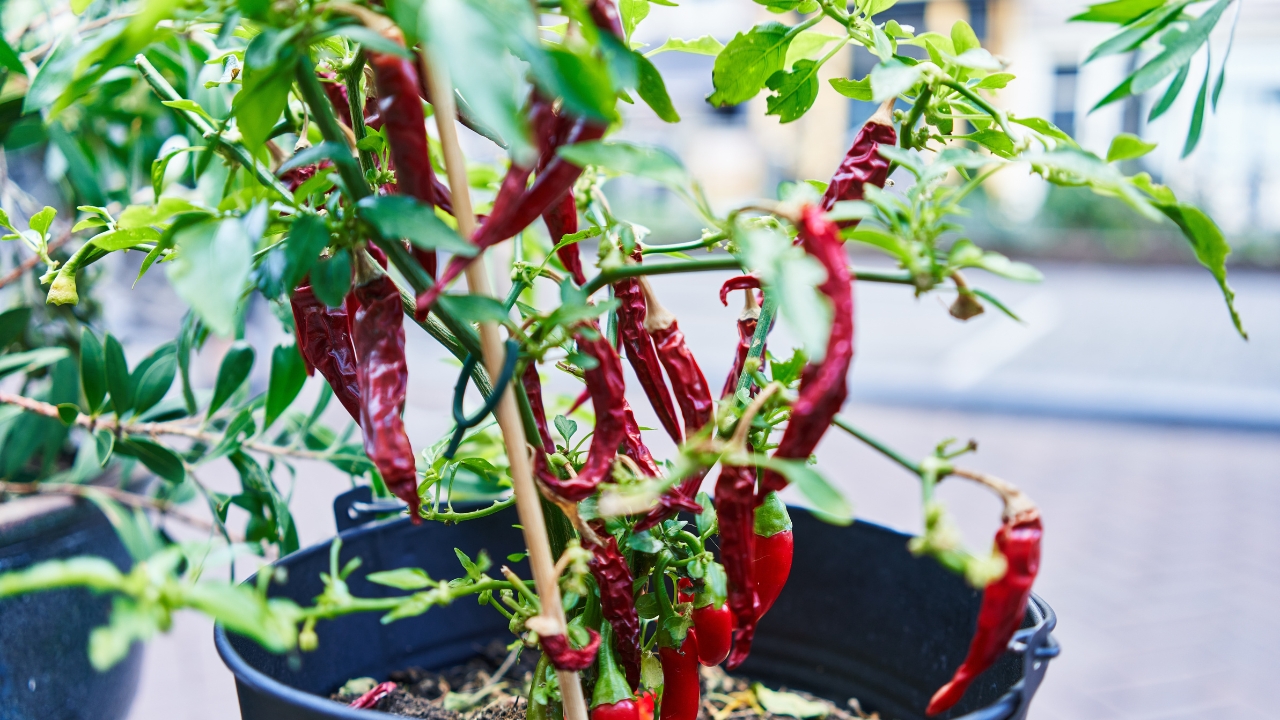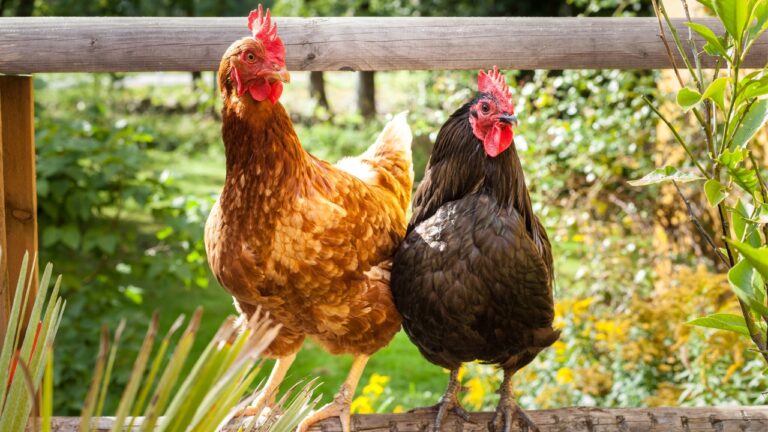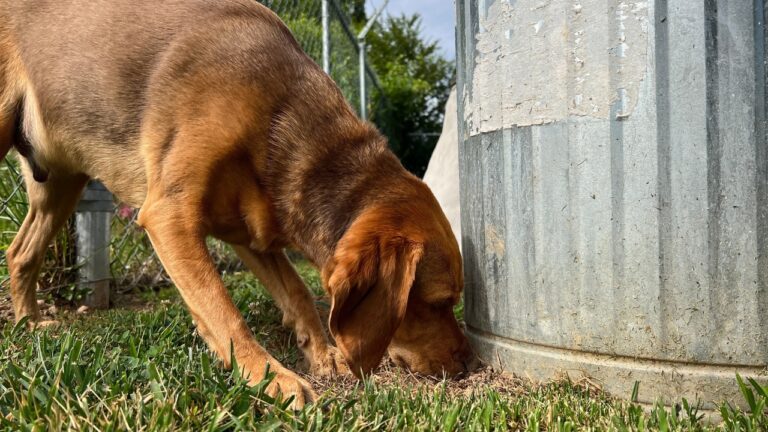10 Fruits and Vegetables You Can Grow in Containers
Growing your own fruits and veggies in containers is like having a mini garden right where you need it—on your porch, balcony, or even your kitchen counter. You don’t need a big backyard or fancy tools to make it happen. It’s all about working with what you’ve got and enjoying fresh, homegrown food without the hassle of a full garden.
The best part? You can move your plants around to catch the sunlight or keep them safe from a surprise storm. It’s flexible, easy to manage, and honestly, a little addictive once you see how much you can grow in a small space.
Cucumbers

Cucumbers are perfect for container gardening, especially since they thrive in the heat that pots naturally provide. Whether you’re into fresh slices for salads or making pickles, cucumbers have you covered. Bush varieties are compact and ideal for smaller spaces, while vining types give higher yields but need a trellis or cage to grow upright. Stick to a larger pot—plastic or ceramic works great for keeping the soil moist—and watch your cukes take off.
The Fix:
Cucumbers love water, so keep the soil evenly moist but not soggy. Use a pot with drainage holes and fertilizer-enriched soil to give them a good start. Position the container where it gets full sun for most of the day. For vining cucumbers, train them up a trellis to save space and keep the fruit clean and easy to pick.
Radishes

Radishes are the ultimate “instant gratification” plant. In just about a month, you’ll have crisp, spicy radishes ready to pull from the soil. They don’t need much space, either—any pot about 4 to 6 inches deep will do. Plus, if it gets too warm, you can move your container to the shade to prevent them from bolting. They’re small, fast, and perfect for beginners.
The Fix:
To keep radishes thriving, water consistently to maintain moist soil without overdoing it. Thin out seedlings to give each radish room to grow big and round. Try planting in intervals to keep a steady supply coming. And don’t toss the greens—they’re edible and make a great addition to salads or stir-fries.
Arugula

Arugula is a must-have for anyone who loves a little spice in their salad. Its peppery leaves are complemented by sweet, edible flowers, making it both practical and pretty. A small container—8 inches deep and 6 inches wide—is all you need. Since arugula loves the morning sun but not the afternoon heat, growing it in a container makes it easy to move around to keep it happy.
The Fix:
Water regularly to keep the soil consistently moist; dry conditions make the leaves overly spicy. Harvest the outer leaves first to let the plant keep growing. For the best flavor, pick arugula before it bolts, and don’t forget to enjoy the flowers—they’re just as tasty as the leaves.
Eggplant

Eggplants are not only tasty but also a stunning addition to your container garden. Compact varieties like ‘Fairytale’ or ‘Hansel’ are perfect for pots and don’t overwhelm small spaces. Use a large container with plenty of room for the roots, and consider glazed ceramic pots to help retain water. With a little care, you’ll have fresh eggplants that look as good as they taste.
The Fix:
Place your container in full sun and keep the soil evenly moist—eggplants don’t like to dry out. Fertilize every couple of weeks to encourage healthy growth and plenty of fruit. Keep an eye out for pests like aphids, and use a soft brush or soapy water to deal with them before they get out of hand.
Herbs

Herbs are the ultimate no-fuss plants for containers. Whether you’re working with a sunny windowsill, a tiny balcony, or even a kitchen counter, they’ll fit right in. Plus, a container is perfect for taming runaway plants like mint that can take over if you’re not careful. Toss some basil, thyme, or rosemary into small pots, and you’re set for fresher meals without running to the store.
The Fix:
Herbs love sunlight—aim for a spot that gets at least six hours of it a day. Use well-draining soil and water just enough to keep the soil lightly moist (no drowning them). Regular snipping for recipes keeps them growing strong and bushy. A little bit of monthly fertilizer goes a long way to keep your herb garden thriving.
Peas

Peas are one of those plants that work hard for you, giving you fresh pods while also improving the soil with nitrogen. Whether you go for snow peas, sugar snaps, or English peas, they’re a great way to kick off spring planting. Just pop them in a pot, give them some support like a trellis, and watch them climb.
The Fix:
Use a pot with good drainage and fill it with rich soil. Water regularly to keep the soil consistently moist—peas don’t like it dry. Once they’ve done their thing and finished producing, compost the plants and reuse the soil for a summer crop. It’s like a little container crop rotation without the hassle.
Potatoes

If you’ve never tried growing your own potatoes, it’s time to change that. They taste so much better than the store-bought kind—think creamier and fresher. Containers are perfect for them because you can stack the soil as they grow, which helps them produce more tubers. Plus, you can avoid a lot of the pests and diseases that mess with garden potatoes.
The Fix:
Start with seed potatoes in loose, well-draining soil. As the plants grow, keep adding soil to cover the stems, leaving just the leaves sticking out. Water regularly but don’t let the soil stay soggy. When the plants flower and die back, dump the pot out, and enjoy your haul of fresh potatoes. Seriously, you’ll never want store-bought again.
Squash

Squash is a powerhouse plant, but it can be a little extra with the space it needs. That’s where containers save the day. Go for smaller varieties like ‘Honeybear’ acorn squash or tiny pumpkins that won’t tip over your pot. With plenty of sun, rich soil, and regular watering, you’ll have squash that’s perfect for roasting—or showing off on your patio.
The Fix:
Pick a big, sturdy container because squash can get heavy. Use soil that’s loaded with nutrients and water regularly to keep it happy (don’t let it dry out). Adding a trellis can help keep things tidy if your squash wants to sprawl, and feeding it a little fertilizer during flowering will give you a better harvest.
Lettuce

Lettuce is one of the easiest plants to grow in containers, even if you’re short on space. Its shallow roots mean you can plant it in almost any container, even one just 6 to 8 inches deep. It’s a great way to make use of smaller pots you already have lying around. Lettuce grows best in the cooler months, so think spring and fall. If summer is your only option, a little afternoon shade will go a long way in keeping your greens from wilting.
The Fix:
To keep your container lettuce healthy, water regularly but avoid over-saturating the soil. Harvest leaves as you need them instead of pulling the whole plant. This “cut-and-come-again” method keeps the plant producing fresh leaves. Fertilizing every couple of weeks with a balanced, water-soluble fertilizer ensures you get tender, flavorful lettuce.
Peppers

Peppers—whether sweet, bell, or hot—are a great choice for container gardening. Not only are they low-maintenance, but they also bring a vibrant touch to your patio or balcony. You can grow them solo in a medium-sized pot or pair them with flowers for a functional yet decorative look. Peppers love the sun, so give them a warm, sunny spot to soak up the rays.
The Fix:
To get the best results, use a pot that’s at least 10 inches deep with good drainage. Peppers also benefit from consistent watering—don’t let the soil dry out completely. A slow-release fertilizer or regular feeding with compost tea will help them stay productive all season.
Tomatoes

Tomatoes are a container gardening classic, and for good reason. Upright varieties grow well in larger pots when paired with a cage or stake for support. If you’re tight on space, consider tumbling cherry tomatoes like the compact Terenzo variety, which is perfect for hanging baskets or window boxes. No matter what type you choose, fresh tomatoes right off the vine are always worth it.
The Fix:
Tomatoes in containers need consistent watering, especially during hot weather—dry spells can lead to cracked fruit. Add a layer of mulch to help retain moisture. Fertilize every couple of weeks with a formula designed for tomatoes to give them the nutrients they need for a flavorful harvest.
Strawberries

Strawberries are practically made for containers. Special strawberry pots with side pockets let the plants grow outwards, keeping the fruit off the ground and away from pests and rot. They’re perfect for balconies or patios, and watching the berries cascade as they ripen is as rewarding as eating them.
The Fix:
Strawberries need plenty of sunlight, so place your container where they’ll get at least six hours a day. Water regularly but avoid soaking the crown of the plant. Fertilize with a balanced fertilizer every few weeks, and remove runners if you want to focus on growing larger, juicier berries.
*This article was developed with AI-powered tools and has been carefully reviewed by our editors.







